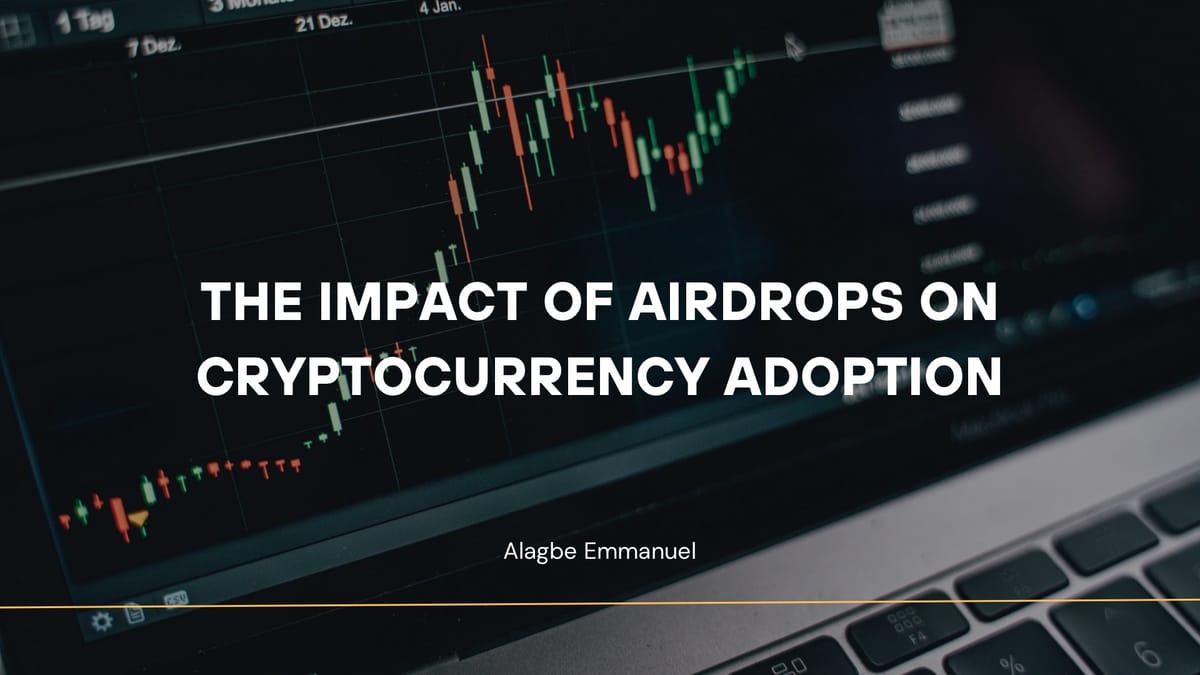The Impact of Airdrops on Cryptocurrency Adoption

Introduction
Cryptocurrency airdrops, the practice of distributing free tokens or coins to wallet holders, have emerged as a powerful tool for driving adoption in the blockchain ecosystem. By leveraging the allure of "free money," airdrops incentivize participation, foster community engagement, and introduce new users to decentralized technologies. However, their impact on long-term crypto adoption is nuanced, with both significant benefits and notable challenges. This article explores how airdrops influence cryptocurrency adoption, their mechanisms, and the broader implications for the industry.
What Are Airdrops?
Airdrops involve blockchain projects distributing tokens to existing cryptocurrency holders, often as a marketing strategy or to bootstrap network activity. They typically target users holding specific cryptocurrencies (e.g., Bitcoin or Ethereum) or those who perform tasks like joining social media channels, signing up for newsletters, or engaging with a project's platform. Airdrops gained prominence during the 2017-2018 crypto boom, with projects like Stellar Lumens and OmiseGO using them to distribute tokens widely.
The primary goals of airdrops include:
- Increasing awareness: Introducing a project to a broader audience.
- Encouraging engagement: Prompting users to interact with a project's ecosystem.
- Decentralizing token distribution: Ensuring tokens are spread across a diverse user base to enhance network security and governance.
- Driving adoption: Attracting new users to cryptocurrencies and blockchain technology.
Airdrops as a Gateway to Crypto Adoption
Airdrops have played a significant role in lowering the barriers to entry for cryptocurrency adoption, particularly for newcomers. Here’s how they contribute:
- Financial Incentive for New Users
For individuals unfamiliar with cryptocurrencies, the prospect of receiving free tokens can be a compelling reason to set up a wallet and explore blockchain platforms. Airdrops provide a low-risk entry point, allowing users to experiment with digital assets without financial investment. For example, the 2014 Stellar airdrop distributed millions of XLM tokens to Bitcoin holders, introducing thousands of users to its payment-focused blockchain. - Educating the Masses
Airdrops often require users to complete tasks like creating a wallet, joining a Telegram group, or learning about a project’s use case. These actions indirectly educate participants about blockchain technology, decentralized finance (DeFi), or specific project functionalities. Over time, this hands-on experience can lead to deeper engagement with the crypto ecosystem. - Building Communities
Airdrops foster vibrant communities by incentivizing users to join and promote projects. Engaged communities are critical for adoption, as they amplify word-of-mouth marketing, share knowledge, and provide peer support. For instance, the 2018 EOS airdrop campaign spurred widespread interest in its delegated proof-of-stake model, encouraging users to participate in its governance. - Expanding Network Effects
By distributing tokens to a large number of wallets, airdrops enhance a project’s network effects. More token holders increase liquidity, attract developers, and encourage integrations with other platforms. This virtuous cycle can make a cryptocurrency more usable and appealing, as seen with projects like Uniswap, which airdropped UNI tokens to early users in 2020, significantly boosting its decentralized exchange adoption.
Challenges and Limitations
While airdrops can accelerate crypto adoption, they are not without drawbacks. Several challenges limit their effectiveness and sustainability:
- Speculative Behavior
Many airdrop participants are motivated by short-term gains rather than genuine interest in a project. After receiving tokens, users may immediately sell them, leading to price volatility and undermining the project’s long-term goals. For example, numerous airdrops during the 2017 ICO craze resulted in rapid token dumps, eroding trust in certain projects. - Regulatory Scrutiny
Airdrops have attracted attention from regulators, particularly in jurisdictions like the United States, where free token distributions may be classified as securities offerings. The SEC’s 2019 actions against projects like Block.one (EOS) highlighted the legal risks, potentially discouraging projects from using airdrops to reach new users. - Sybil Attacks and Fraud
Airdrops are vulnerable to exploitation by bad actors who create multiple wallets to claim disproportionate shares of tokens. This not only dilutes the intended distribution but also frustrates legitimate users, potentially harming a project’s reputation. Projects like Arbitrum, which conducted a 2023 airdrop, implemented anti-Sybil measures, but such attacks remain a persistent issue. - Superficial Engagement
While airdrops attract users, they don’t always translate into sustained adoption. Many participants engage minimally, completing only the required tasks without exploring the broader ecosystem. This superficial interaction limits the impact on long-term cryptocurrency usage.
Case Studies: Airdrops in Action
To understand the real-world impact of airdrops, let’s examine two notable examples:
- Uniswap (2020): Uniswap’s airdrop of 400 UNI tokens to users who had interacted with its decentralized exchange was a landmark event. Valued at approximately $1,200 at the time, the airdrop rewarded early adopters and attracted new users to DeFi. The move solidified Uniswap’s position as a leading DEX, with its governance token driving community participation and protocol development.
- Aptos (2022): The Aptos blockchain airdropped tokens to early testnet participants and community members to incentivize engagement. While the airdrop generated buzz, it also faced criticism for uneven distribution and lack of transparency, highlighting the importance of clear criteria and communication in airdrop campaigns.
These cases illustrate that well-executed airdrops can drive adoption, but poor planning or execution can lead to mixed outcomes.
Strategies for Maximizing Airdrop Impact
To enhance the effectiveness of airdrops in promoting crypto adoption, projects can adopt the following strategies:
- Targeted Distribution: Focus on users likely to engage long-term, such as existing community members or those with a history of blockchain activity, rather than indiscriminate giveaways.
- Gamified Engagement: Incorporate tasks that encourage meaningful interaction, such as staking tokens, participating in governance, or using the platform’s features.
- Clear Communication: Provide transparent eligibility criteria and project goals to build trust and reduce speculation.
- Post-Airdrop Support: Offer tutorials, community events, or incentives for continued participation to convert airdrop recipients into active users.
The Future of Airdrops and Crypto Adoption
As the cryptocurrency industry matures, airdrops are likely to evolve. Emerging trends include:
- NFT Airdrops: Projects are increasingly distributing non-fungible tokens (NFTs) to engage users in digital collectibles and metaverse ecosystems.
- Conditional Airdrops: Tokens may be distributed based on user milestones, such as holding assets for a set period or completing specific tasks, to ensure long-term commitment.
- Integration with DeFi and Web3: Airdrops are being used to onboard users to decentralized applications, bridging the gap between Web2 and Web3.
However, the success of airdrops in driving adoption will depend on addressing their challenges. Projects must balance accessibility with mechanisms to deter speculative behavior, while regulators may impose clearer guidelines on token distributions. Additionally, as crypto becomes more mainstream, airdrops may shift toward rewarding loyalty and utility rather than solely attracting new users.
Conclusion
Airdrops have undeniably contributed to cryptocurrency adoption by lowering entry barriers, educating users, and building communities. Their ability to distribute tokens widely has introduced millions to blockchain technology, fostering network effects and driving engagement. However, their impact is tempered by speculative behavior, regulatory risks, and superficial participation. For airdrops to remain a catalyst for crypto adoption, projects must design thoughtful campaigns that prioritize long-term engagement over short-term hype. As the industry evolves, airdrops will continue to play a pivotal role in shaping the future of decentralized finance and Web3, provided they adapt to the changing needs of users and regulators alike.



Comments ()